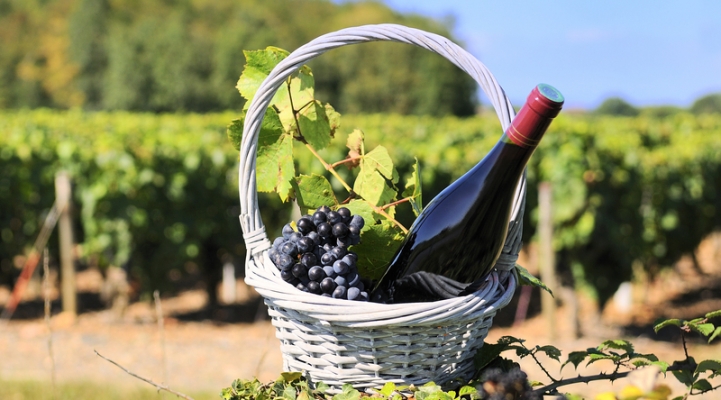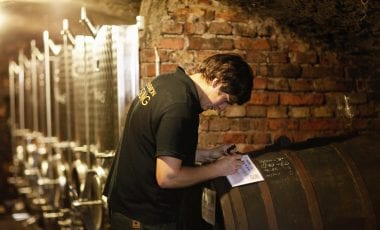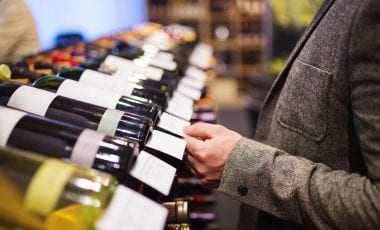The third Thursday of November means there is one week to go until Thanksgiving. It also means the arrival of the perfect wine for the occasion. Sneered at by some, a modern classic is released annually on this day. Up to 30 million bottles of Beaujolais Nouveau are waiting to get opened!

Bars, brasseries, bistros and restaurants will hang out their “It’s Beaujolais Nouveau Time” signs. The new one has arrived, meaning we get to celebrate the arrival of the very first red wine of the new vintage. This tradition is over 50 years old, but don’t expect the same availability as in previous years. Frost, hail and a cooler than usual Summer have affected the harvest in the Beaujolais region.
How is Beaujolais Noveau made?
 How do vintners manage to produce a drinkable wine and bottle it in such little time after harvesting? The answer lies in a special fermentation process called carbonic maceration. The freshly harvested, uncrushed grapes and a yeast specific to this process are loaded into a large sealed container filled with carbon dioxide. Grapes that are gently crushed at the bottom of the container by the weight of the grapes start to ferment, emitting more CO2. All this carbon dioxide causes fermentation to take place inside the uncrushed grapes, a process called intracellular fermentation. The fermentation is sped up significantly, creating a very intense wine. The drawback is that you can’t create a deep or complex wine this way, but noone is expecting that. Because of its abundant fruitiness, you should chill your Primeur and serve it at 55°F (13°C). This will release it’s full taste potential.
How do vintners manage to produce a drinkable wine and bottle it in such little time after harvesting? The answer lies in a special fermentation process called carbonic maceration. The freshly harvested, uncrushed grapes and a yeast specific to this process are loaded into a large sealed container filled with carbon dioxide. Grapes that are gently crushed at the bottom of the container by the weight of the grapes start to ferment, emitting more CO2. All this carbon dioxide causes fermentation to take place inside the uncrushed grapes, a process called intracellular fermentation. The fermentation is sped up significantly, creating a very intense wine. The drawback is that you can’t create a deep or complex wine this way, but noone is expecting that. Because of its abundant fruitiness, you should chill your Primeur and serve it at 55°F (13°C). This will release it’s full taste potential.
Finish your bottles before winter is over. By spring, most Primeurs will taste boring and somewhat stale.
Do you have any questions about wine in general or the Beaujolais Nouveau in particular? Leave a comment or start a conversation on Facebook and we’ll be in touch!


